2015 NFL Mock Draft: Pick-by-Pick Guide to the 1st Round – Bleacher Report We’re finally here: draft month. After a year of poring over film and looking for projections, we finally have closure. We know who has declared. We know who did well at all-star games. We know who excelled at the combine and pro days. The information has stopped. In an attempt to project how the draft shakes out, we’ve compiled a mock for the first round. Sorry to the fans of the Seattle Seahawks and Buffalo Bills, but you’re going to have to wait a little longer to go up to bat. These are the best guesses for the first 32 picks in the draft, including a couple of trade scenarios that make sense on paper but are nothing too wild. Projecting the draft isn’t a science, and even the mock drafts that teams create usually get fouled up by one domino going an unexpected way. For example, last year’s curveball was the Jacksonville Jaguars’ selection of Blake Bortles, which could have impacted both the trading up of Buffalo to select Sammy Watkins and Oakland landing Khalil Mack, who was named ESPN’s Defensive Rookie of the Year. Join us as we go pick by pick, taking names off the board. Hopefully, we’ll avoid that one odd falling domino in the process. It’s gotten to the point where the media, including former NFL scouts and general managers, are mocking this pick with such frequency that the entire football world would seem to go into instant shock if Jameis Winston was not selected with the first overall pick. The Tampa Bay Buccaneers badly need a starting quarterback, and probably only two passers in the draft will be able to provide quality snaps from Day 1, and they’re both going to go high. The reason why Winston is the choice over Marcus Mariota of Oregon is because of his background as a pro-style passer. Mariota showed some anticipation throws and pro reads at times, but Winston essentially had to do that consistently in every game while at Florida State. If you chalk up Winston’s interceptions to playing a tougher scheme than the other passers in college football, then your mind is eased on Winston’s bust rate, at least as an on-field athlete. Lovie Smith, who coached Rex Grossman and Jay Cutler in Chicago, may have his best quarterback ever when Winston walks through the door in Tampa. Trade condition: Tennessee sends the second overall pick to San Diego in exchange for the 17th overall pick and quarterback Philip Rivers. Of the multiple teams Marcus Mariota has had a private workout, two have been the Tennessee Titans, who own the second overall pick, and the San Diego Chargers. The Chargers haven’t given their longtime starter, Philip Rivers, a new contract, despite the facts that he’s on the last year of his deal and another first-round passer from his draft class, Ben Roethlisberger, just signed a four-year contract worth more than $20 million per season. At 33 years old, Rivers may not look like a premier candidate to be a “quarterback of the future,” considering his playoff success, but there may be some more interest coming from Tennessee than San Diego in that regard. The Titans head coach, Ken Whisenhunt, was Rivers’ offensive coordinator in San Diego during 2013, when Rivers had a 105.5 passer rating, the highest he’s ever measured during a full season as a starter. Whisenhunt is on a bit of a hot seat, with a 3-25 record in his last 28 games as a head coach dating back to his days in Arizona. If San Diego is looking toward the future for a passer, Mariota is the top quarterback left on the board. In an attempt to save his job, would Whisenhunt, who revived Kurt Warner late in his career for a Super Bowl run, exchange the second overall selection for a mid-first-round pick and a veteran quarterback whom he has a history with? A lot of elements go into this nuanced hypothetical trade, but nothing screams out “I can’t see this happening.” Everyone would win in this scenario: The Chargers land their guy for the next decade, while the Titans solidify job security while keeping their feet entrenched in the first round. Trade condition: Jacksonville sends the third overall pick to Oakland in exchange for the fourth overall pick and the 102nd overall pick. Leonard Williams is largely considered the top defensive player in the draft class, and if the Titans don’t move out of the second overall selection, I wouldn’t be surprised if they draft Williams to play 5-technique for them opposite of Jurrell Casey. With him falling to the third overall selection, though, there becomes a bit of an issue. At the beginning of the offseason, I’m sure the Jacksonville Jaguars, who own the third pick, would have been happy with bringing Williams on, but they added Jared Odrick, who plays Williams’ role, as a premier free agent. Odrick was a good player in Miami, but when Ndamukong Suh arrived to town, there seemed to be no reason to pay two high-level interior defensive linemen. On the other hand, the Oakland Raiders don’t have a 3-technique, also known as an under tackle, on their roster who is starting-caliber on most teams. This situation could play out like the third overall selection in the 2012 NFL draft, where the Cleveland Browns solidified their ability to draft Trent Richardson by trading the Minnesota Vikings their fourth-, fifth- and seventh-round picks to flip one spot in the first round. For Jacksonville, the top asset on the board is one it cannot use. For Oakland, the opportunity to turn a large weakness into a strength—taking out the risk of someone else trading up for the guy you want just one pick before you go on the clock—seems rewarding enough to give up a mid-round selection. The Jacksonville Jaguars built a solid defensive line last season without investing large sums of money in it, which is an asset in itself. The one thing they are missing, though, is a top pass-rusher. Gus Bradley, the Jaguars head coach who is formerly a Seattle Seahawks defensive coordinator, knows that pass-rushers are one of the more important, if not the most important, aspect on the football field outside of quarterbacks. By in large, these Seattle teams under Pete Carroll that have made Super Bowl appearances have been built off the ability to pressure the quarterback with only four or five rushing. However, if it was easy to acquire pressure-creators, teams would be loaded with them. They just don’t come anywhere close to cheap. If the Jaguars are going to be drafting in the top five anyway, though, they might as well use their selection to swing for the fences. For the most part, media scouts name Florida’s Dante Fowler Jr. as the top player at his position in the class. Growing up in St. Petersburg and playing in Gainesville, he’s had the national spotlight on him in Florida since at least high school. According to Mike DiRocco of ESPN.com, Fowler even stated at his pro day that he’s be “stunned” if he weren’t the selection for the team in teal, pointing at the need and his scheme fit in Bradley’s defense as the reason. In the past, the Washington Redskins have gone for home runs in the draft. Even recently, they’ve snagged David Amerson, a cornerback with a multitude of issues on tape but elite interception production, and Trent Murphy, who seemed like a poor athletic fit as an NFL edge player but racked up sacks at Stanford. What they need more of are safe selections who translate. The league demands about three or four draft “hits” per year to keep a team consistently good. Instead of winding up for deep shots, it’s better for the Redskins, who are strapped for assets on a team with below-average talent, to just get on base. Amari Cooper of Alabama, a wideout, is both a safe selection and a quality football player. Dating back to his freshman year, Cooper was torching SEC defensive backs. When matched with Lane Kiffin, he was a legitimate Heisman candidate. He has speed (4.42 40-yard dash) and decent size (6’1″, 211 lbs) plus he has a knack for finding himself in the end zone. He’s not going to be a Calvin Johnson type, but if he’s a guaranteed player on the Reggie Wayne to Santonio Holmes spectrum, he’s worth a top-five pick in this draft class. Pierre Garcon and DeSean Jackson are good options for Robert Griffin III, but Cooper can put the receiving unit over the “OK” threshold into the “good” range. It would also be logical to give the quarterback the franchise gave up three first-round selections for as many premier talents to throw to before a judgment is made on moving past RGIII. The New York Jets are in an interesting predicament in the draft due to their slot and needs. They don’t have a glaring hole on their team, unless you’re anti-Geno Smith, and even then, no quarterback available is worth drafting with the sixth overall selection. Historically, Todd Bowles, the Jets’ new head coach, hasn’t needed a top-tier edge player to generate pressure, because he coaches an aggressive defensive scheme. If value fell into his lap, though, in this specific situation, it could be a big plus for the Jets down the line if they can’t continuously invest in top talents on the defensive interior and secondary like they currently are. Vic Beasley of Clemson had two great years against ACC talent, earning two all-conference honors along with a consensus All-American nod. The issue is that at his size (6’3″, 246 lbs), there are questions about him as a run defender. His career projection is Bruce Irvin on the low end and DeMarcus Ware on the high end, but that’s still a risk some wouldn’t take. In the Jets’ situation, they can develop him around other defensive cornerstones, allowing him to thrive where he wins. Under the coaching staff in place, it would seem logical there’s a higher chance he “hits” than in a vacuum. The Chicago Bears hired Vic Fangio as their defensive coordinator this offseason. With his background as a defensive coordinator with both the San Francisco 49ers and Stanford Cardinal recently, the Bears are moving from their 4-3 defense to a 3-4 this season. The 2014 Chicago defense wasn’t even built to play quality football in a 4-3, let alone smoothly transition to a completely different scheme. The talent to make that move had to come from the outside, which wasn’t easy when they lost a defensive star like defensive lineman Stephen Paea, who was a Pro Bowl snub, in free agency to the Washington Redskins. They added two solid pressure players in Pernell McPhee, who does his work as a drop-down interior player, and Sam Acho, who is an edge defender. On the defensive line, Ray McDonald, who was a quality starter under Fangio in San Francisco, and Jarvis Jenkins, a mid- to low-level starter in Washington, were also brought onto the team. McDonald, though, has been marked as a player with alleged domestic violence in his past. Even with all of those moves, it’s hard to point to a guy on the defense and say he’s a phenomenal talent. Arik Armstead of Oregon can be that player. In Oregon’s conservative 3-4 Cover 2 defensive scheme, Armstead was asked to be a run-first defender as a defensive end but still generate enough pressure during the Ducks’ rush-three, drop-eight plays. He’s a 6’7″ giant who was has been earmarked for the NFL since high school. While this may be a surprising selection on paper, true 3-4 teams are looking for the mold of an Armstead from a college pool that is decreasingly pumping those bodies out due to the spread-heavy collegiate game. He has the potential to be a Calais Campbell, which you can’t say about anyone else in the class. Before combine week, Randy Gregory was considered the top pass-rusher in the class. After news of his weight and a failed drug test, though, he’s slipped down many media boards, which you’d assume has also happened behind closed doors too. At only 235 pounds in Indianapolis, the concerns of Gregory holding up on the line of scrimmage against the NFL’s punishing offensive linemen heightened. If any team can get over those flaws, it’s the Atlanta Falcons. The window for a Super Bowl run with the team seems to be nearing a close, with veterans like Roddy White aging and few “stars” outside of Julio Jones and Matt Ryan. Despite that, outside of the pass rush, they’re still a solid team but have finished in the bottom of the league record-wise for the last two seasons. They need a jolt to bump up their pressure numbers. The Falcons added Brooks Reed and Adrian Clayborn this offseason, but Reed is more of a “Sam” linebacker than pass-rusher, and Clayborn is more of an interior pressure player than an edge one. Last year, Atlanta finished with 22 sacks on the season, tied for the second-worst number in the league. Those two additions aren’t going to completely reverse the fortune of the unit. Kansas City’s Justin Houston notched 22 sacks in 2014, matching Atlanta’s entire team total. Houston also failed a drug test at the combine but was drafted by Scott Pioli, who is now the assistant general manager of the Falcons. Pioli may view Gregory as this franchise’s opportunity to land a Justin Houston, a game-changing sack machine who was overlooked due to a non-football cause. Trade condition: New York Giants send the ninth overall pick to Miami in exchange for the 14th overall pick, the 114th overall pick and a future fourth-round selection. The falling star in this situation is Kevin White, a receiver from West Virginia who some have even mocked going as early as the fourth overall selection. He was a senior last year and really put up his only season of note in college, which has caused many to question if he’s a one-year wonder. He also faced mostly non-NFL prospects at cornerback, but he looked like a young Larry Fitzgerald at times. The New York Giants can’t really cash in on the asset, as they have two star receivers in Odell Beckham Jr., the rookie phenom of last season’s receiving class, and Victor Cruz, who is coming off a season-ending injury. Instead, a team like the Miami Dolphins, who need another threat on offense, come swooping in with a trade offer to jump the St. Louis Rams, who are sitting at the 10th overall pick. Miami has traded for Kenny Stills, who was productive in New Orleans, and drafted Jarvis Landry last season, a decent slot asset, but neither of those players projects as a No. 1 option at the position moving forward. With White stepping up into that role, he would allow Still to be a legitimate option opposite him on the outside and keep Landry in the slot—all aspects that should help Ryan Tannehill’s game. Last season, the St. Louis Rams selected Greg Robinson of Auburn with the second overall pick. The college left tackle was projected as a rookie at the guard position who would slowly transition outside when he was ready. With Jake Long now gone, the left tackle slot is open, which seemingly is going to be filled by the high draft pick. The guard role, which was once filled with Robinson, though, then becomes a question. The best player on the board for my money at this point is Brandon Scherff, who also played left tackle in college. As explained in a previous article, Scherff’s size (6’5″, 319 lbs) is a concern for a bookend, but he projects as an elite player on the interior offensive line. As the Cowboys learned last season with Zack Martin, a rare rookie guard can completely change how well an offensive line runs, and if the Rams are going to roll with Nick Foles at quarterback, they’re going to need as much help as they can get. Teddy Bridgewater, the Minnesota Vikings’ starting quarterback and first-round pick of 2014, is firmly entrenched in the future of the franchise. With that in mind, it wouldn’t be crazy to see Minnesota give him his favorite target from college, who compares to a poor man’s A.J. Green or Jordy Nelson. The Vikings have options at receiver, but ones that aren’t generally looked at as safe. There’s Cordarrelle Patterson, the former first-round pick of the team, who only totaled for 384 yards and a score last season. There’s Charles Johnson, who went from the Browns practice squad to positing decent numbers to end 2014. And lastly, there’s Mike Wallace, who failed in Miami after signing a super deal off his work in Pittsburgh and was traded for this offseason. There are two “names” in the unit, but the receiver who most consistently put up numbers is Johnson, who still only had a small sample size of games. This offense needs consistency, and DeVante Parker of Louisville can bring that to the table. During Parker’s junior season, he looked like a surefire top-10 pick, but he returned to school to avoid a class topped by Sammy Watkins, Mike Evans and Odell Beckham Jr. Then, before his senior season, he suffered an injury to his left foot, which kept him out of early games and hampered his ability to cut when he was active. If fully recovered, he’d be the most talented wideout on the roster on Day 1 and probably Bridgewater’s favorite target. Trade condition: Cleveland sends the 12th overall pick to San Francisco in exchange for the 15th overall pick and the 126th overall pick. Many believe that Trae Waynes of Michigan State is a top-10-caliber cornerback. His athletic testing would suggest so, but he’s off and on at time, and he’s a hard player to pin down to a team in the top-10 range, with premier positions like edge-rusher, receiver and quarterback loaded in the front end of the draft. With that being said, Byron Maxwell is receiving a large contract in free agency now because of the recent inflation at the position. He was a one-year starter in a secondary with three Pro Bowl players and earned a six-year contract worth more than $10 million per season as a result. One team in big need of a cornerback is San Francisco, who lost Vic Fangio, its old defensive coordinator, to the Chicago Bears this offseason. For the most part, Fangio was able to turn any cornerback the 49ers had into a starter with the front seven that they had built. That front seven has started to diminish, though, as players like Patrick Willis and Chris Borland have retired, Justin Smith continues to age, and Ray McDonald left with Fangio to Chicago. If the Browns don’t see a huge plus value in keeping the 12th overall pick as opposed to sliding down to the 15th, this is a perfect spot for the 49ers to land the top cornerback in the draft. In exchange, Cleveland picks up an extra mid-round selection while taking a half-step back to watch how the board falls. The worst unit on the New Orleans Saints roster last season was the pass defense. In multiple ways, this unit held back a team that once had Super Bowl hopes before 2014. The cornerbacks were an issue, as an aging Champ Bailey was signed, but he didn’t even have enough in the tank to make it through the final cuts on the roster. The pass-rushing unit had little to offer as well. The combination of those two facts and their heavily invested safety tandem not performing up to par really hurt the Saints last year. With the signings of Brandon Browner and Kyle Wilson, the team figures its cornerback issues are fixed, and it’s too early to give up on the safety tandem. The last spot to shore up is the pass-rushing stable. Alvin “Bud” Dupree tested at the combine in a way we had never seen. Here’s an excerpt of an article I wrote about him during the event: When you chart out Waldo’s explosion score for first-round defensive ends over the past decade, the results at the top are very efficient. The top six first-round defensive ends in the category are four-time Pro Bowler Mario Williams, two-time Defensive Player of the Year J.J. Watt, three-time All-Pro Merriman, three-time Pro Bowler Orakpo and Nick Perry. The only blemish is Perry, who sustained early-career injuries and was demoted to a bench role after future Hall of Fame pass-rusher Julius Peppers was added to the Green Bay Packers in 2014. Standing above all of them? Alvin Dupree, who netted an unheard-of score of 1.16. Dupree is raw and may take some time to develop, but in two seasons, he can be a young Cameron Wake, putting fear in the hearts of divisional quarterbacks like Cam Newton, Matt Ryan and maybe even Jameis Winston. With a vacancy at the center position, there can be a lot of shuffling on the front line of the New York Giants offense this year. The offensive line is about the unit and not individuals, so you’re only as strong as your weakest link, and the Giants have a hole. They re-signed John Jerry this offseason, but only to a two-year deal with a $1 million signing bonus. To say the least, it’s a flexible contract that has an escape hatch. Jerry started at guard last season next to second-round pick Weston Richburg, who is more than likely moving to center this year, the position he played at Colorado State. With Geoff Schwartz, who basically missed all of 2014 due to injury, coming back, presumably in a starting guard role, that replaces the vacancy Richburg left behind, but it doesn’t help that Jerry is still the weak link. An option for the Giants here is to take Andrus Peat, a big, strong tackle from Stanford, and play him at right tackle. That would allow Justin Pugh, a former first-round pick from Syracuse, to move from a starting right tackle role into a starting guard role, which has been talked about since he was a prospect. With player movement, one draft selection and Schwartz coming back from injury, the Giants, in one offseason, could improve at four positions on the O-line. With Eli Manning getting older, they’ll need some good protection to keep pass-rushers from sacking the QB, and head coach Tom Coughlin, into unemployment. After missing out on the quarterback and receiver sweepstakes, the Browns moved down in this draft to acquire an extra selection from the San Francisco 49ers. The offensive side of the ball is pretty solid outside of the question mark surrounding their quarterback position. They have a healthy stable of running backs, have one of the best offensive lines in football and are slowly improving at the receiver position with additions like Dwayne Bowe. The defensive side of the ball needs some elbow grease, though. Outside of the secondary, there aren’t players you envision as stars now or in the future. One of the reasons for that is missing on players like Phil Taylor, a nose tackle from Baylor who was supposed to be a Haloti Ngata or Dontari Poe-level player, but is on the last year of his contract and might not be re-signed. The staff could view a pick like Danny Shelton, a nose tackle from Washington, as a type of masking agent that can make up for past faults. If Shelton “hits” and becomes a Ngata-type player, then the Taylor predicament would be erased from the roster. In 2014, the two can play side-by-side on run downs, as two big bodies can find space on the field in a 3-4 defense. It can be somewhat of a trial period to see if either Shelton or Taylor has any hope as an end and not just a tackle. If they prove they can’t, Taylor is jettisoned, and the defense builds around Shelton. It’s a simple selection: There’s a lack of talent on defense in Cleveland, so draft the giant who gets sacks. Last season, the Houston Texans had the top pick of the draft and used it on Jadeveon Clowney, a pass-rusher from South Carolina. He was considered one of the best prospects at his position in the past decade, but his rookie season was stalled by injury. After tearing his meniscus, he eventually landed on the injured reserve list and has since had microfracture surgery. Microfracture surgery has affected the careers of many athletes, particularly in basketball, where Greg Oden and Amar’e Stoudemire had continuous knee issues down the line in their careers. Oden, the first overall selection by the Portland Trail Blazers, is a scary parallel for what Clowney might be. After being labeled as a “once in a decade” type like Clowney, Oden’s knees kept him from playing in basically four of his five years in Portland. He played one year in Miami afterward and is currently a free agent, forever labeled as a “draft bust.” Whitney Mercilus, another former first-round pick, is the pass-rusher opposite of Clowney if he comes back, but his current replacement, John Simon, isn’t what you’d think of as a starting-caliber pass-rusher. With that in mind, along with the inherent risk that Clowney might never be the same, it wouldn’t be a bad move to draft another pass-rusher, just in case. The worst thing that can happen is that a team has three talented pass-rushers and the newly drafted player is looked at as an unnecessary asset, but teams like the New York Giants built Super Bowl squads with depth in pressure positions. With Shane Ray slipping down the board, it would make sense for the Houston Texans to pick him up. Missouri continues to pump out defensive linemen, and hopefully he’s a player of the caliber of Aldon Smith or Sheldon Richardson at the next level. After trading back from the second overall pick to the mid-first round for quarterback Philip Rivers, the Tennessee Titans are once more on the clock. On offense, they have investments. Last season, they drafted Bishop Sankey in the second round of the draft after taking tackle Taylor Lewan in the first round. At receiver, they have a combination of Kendall Wright, Justin Hunter and newly acquired Harry Douglas. On the defensive side of the ball, it’s a different story. They transitioned to a 3-4 defense last season, and the only real “great” defender they had in their front seven was Jurrell Casey, who went from a 3-technique role to playing a two-gapping end role. The team has since added Derrick Morgan and Brian Orakpo as edge-rushers, previously a huge need for the squad. Tennessee still needs help on the defensive line opposite of Casey, though. If it does pick at the second overall spot, I wouldn’t be surprised if it went with Leonard Williams, a 3-4 defensive end from USC. Otherwise, Malcom Brown of Texas is an interesting defender who can do a little bit of everything. With more talent comes more potential flexibility for the team, and that’s perfect for Brown, who can play 0-, 1-, 3- and maybe even 5-technique at the next level. Cameron Erving came into his senior season with potential to be a first-round left tackle. Many thought he could have skipped early and been a high draft pick in 2014. During the 2015 season, though, some issues with his game started to surface. Against speed-rushers like Clemson’s Vic Beasley, Erving’s athleticism couldn’t keep up on the edge, raising questions about his role as a left tackle at the next level. Down the line, though, he moved to center, where his athleticism in space was de-emphasized and his strong anchor was stressed. As a center, he looked like the most dominant offensive lineman at his position in college football. After losing starting center Rodney Hudson to the in-division rival Oakland Raiders, the Kansas City Chiefs have a hole to fill at the center of their offense. Erving is the type of player who can come in as a plug-and-play option and potentially become a Pro Bowler or All-Pro in a couple of seasons. The position of center isn’t usually drafted highly, but Erving is a special talent—and the Chiefs have a special need. The Cleveland Browns missed out on the early run at receiver and quarterback and brought in a defensive lineman with their first pick of the draft, so it’s probably time for them to look toward the offensive side of the ball. At Texas A&M, Johnny Manziel was surrounded by an amazing cast of talent. The Browns have an offensive line in front of him, but they still lack that Mike Evans-level receiver. Breshad Perriman of Central Florida is a 6’2″ receiver who assisted Blake Bortles during his Fiesta Bowl season of 2013, which led to his being selected third overall in the 2014 NFL draft. At his pro day, Perriman jumped for a vertical of 36.5″ and ran a 40-yard dash of 4.24, according to NFL.com. He’s a freak athlete who might be able to replace Josh Gordon in the minds of Cleveland fans. Evans last year was drafted seventh overall. If the Browns can get an Evans clone (although Perriman is two inches shorter) 12 picks later, it’s worth the investment. After the Philadelphia Eagles traded for Sam Bradford, the chances of their attempting a massive trade up for Oregon quarterback Marcus Mariota, formerly coached by Chip Kelly, were thrown out of the window. With a now seemingly loaded offense, it would be near shocking if the Eagles didn’t use their first-round pick on a defensive player. After signing Byron Maxwell, a one-year starter, to a deal worth over $10 million per season, Philadelphia secured one of its starting boundary corner spots. Outside of Maxwell, though, the team has limited boundary options. Walter Thurmond III and Brandon Boykin are both solid defensive backs, but they’re better slot options than outside players in the current scheme. Because of that, there’s a good shot that the team leans toward a cornerback. Near the middle and end of the first round, there should be plenty of cornerbacks to choose from, and Philadelphia could start the “run” on the position. Byron Jones of Connecticut is a rare athlete with all the tools to be a player like Maxwell or Richard Sherman, but his shoulder injury ended his college football season early. This offseason alone, Kelly has brought in big investments in Bradford, DeMarco Murray, Ryan Mathews and Kiko Alonso, who all have injury histories. If Kelly really does believe that he and his staff can prevent injuries from occurring, then Jones is a perfect fit and should be looked at as a plus value. The Cincinnati Bengals are heading into an issue at the tackle position. For a team that has historically been labeled as “cheap,” which may change with penalties added to teams that don’t make it over the cap floor, the Bengals are currently slated to have to replace both of their tackles after the 2015 season. Both Andrew Whitworth, 33 years old, and Andre Smith, 28, are in the last years of their contracts. Largely a draft-and-develop squad, could Cincinnati be looking at the 2015 draft for a potential 2016 starter? The player who stands out is D.J. Humphries of Florida. An early declaration, Humphries had such a lean frame while playing for the Gators that he almost looked like a tight end, but he was able to shut down elite SEC pass-rushers like Shane Ray with his amazing movement skills. If there is a player who has “Tyron Smith upside” in this class, it’s Humphries. Smith had to develop at the next level too. With Whitworth and Andre Smith buying Humphries a year on the bench without being thrown into the fire first, this is a perfect match for a forward-thinking move. After years of neglecting the position, it’s probably time for the Pittsburgh Steelers to land a top corner in the first round of the draft. The best one on the board, and possibly in the class, is Marcus Peters of Washington. He has the potential to be an amazing press cornerback on the boundary but was kicked off his college squad after a violation of team rules. Peters, on the field, is a fiery player. He jars wideouts after the play, mentally gaming his opponent just as much as he does physically. He has one of the best chucks in the game, sometimes leaving his man on the ground before he can even attempt a break on the cornerback. Did Peters’ competitive personality get kicked him out of school? Teams will need to do their homework there, but there’s a shot that he’s a Charles Woodson-type player, both on and off the field. Woodson was largely looked at as a leader of his locker room with the Green Bay Packers, and with Washington’s new coaching staff, maybe they are looking for a different kind of leadership personality. La’el Collins is one of my favorite players in the class. At LSU, we’ve seen him rack up three pancakes on a single run play, which is where he wins. He’s a giant mauler, but he has enough strength and length that he can potentially project to being a solid tackle like D.J. Fluker at the next level. The Detroit Lions have a solid left tackle in Riley Reiff, but they still need a right tackle to hold down the bookends for quarterback Matthew Stafford. Collins can win a camp battle with LaAdrian Waddle on paper, and even if he doesn’t, he’ll be an amazing guard prospect. This is a safe pick with upside, which is what the Lions need on offense. They’ve already established their identity with Stafford and Calvin Johnson. They just need a couple of pieces to keep the game running smoothly for those two. Dallas built an offensive line that assisted the trio of Tony Romo, DeMarco Murray and Dez Bryant last season. Detroit can do the same in 2015. If Todd Gurley weren’t injured, he might be a top-10 pick in this draft class. He’s one of the best running back prospects to come out in a decade, and even with the NFL’s decreasing value of individuals at the position, Gurley can be a game-changer like Marshawn Lynch. When he fully recovers from his ACL injury, he might immediately be a top-10 player at the position at the pro level. That’s a risk I’m willing to take near the end of the first round, even with the inherent medical red flag. With Carson Palmer’s injury history, the Arizona Cardinals clearly need a second threat to keep the defense honest. Their current running back stable is solid, with Andre Ellington and Stepfan Taylor leading the pack, but there isn’t a go-to guy on the roster. Gurley can fill that top running back role whenever he steps on the field, be it September or December. The Cam Newton era in Carolina can be explained easily. The Panthers acquired a quarterback with all the potential in the world, but they have chosen to build their defense rather than give him help, even at his young age. Last season they drafted Kelvin Benjamin in the first round, a receiver from Florida State, and this year, it looks like it’s time for them to land a solid bookend. Despite the signing of Michael Oher, the Panthers still need a long-term fix at both tackle positions. At this point, the best bookend on the board is T.J. Clemmings, a former basketball player and defensive tackle convert from the University of Pittsburgh. Clemmings played right tackle for Pittsburgh and is probably going to project there and only there at the NFL level. His feet are too sloppy to play inside, where the quick game is emphasized, and he lacks too much experience to be trusted on the blind side. With that being said, he has the potential to be a Duane Brown type of tackle. Brown has made three straight Pro Bowls as a lineman in Houston and is quite possibly the most underrated player in the league. Like La’el Collins, Clemmings’ strength is his long-and-strong ability, but he needs to be refined as a consistent player on a down-to-down basis. It must be stressed more often that teams do not build big boards in the mind of covering the game nationally like the media do. NFL teams are looking for specific traits that can bring in players into their system smoothly and make a quicker impact. When looking at the Baltimore Ravens under Joe Flacco, it’s obvious they love the deep game. It’s where their passer separates himself, and their offensive line is built well enough to sustain longer drops without giving up pressure. At the college level, it’s hard to say there was a better deep game receiver than Devin Smith, who helped lead the Ohio State Buckeyes to a national championship last season. He really only ran a nine-route, also known as a streak, for the most part. Steve Smith Sr., while still solid at his age, doesn’t have the juice in his legs that he once did. It’s hard to say that a player like Marlon Brown will be able to replace Torrey Smith‘s contribution to the offense. Devin Smith can come in on Day 1 and be that deep threat the offense is missing. Many projected the Dallas Cowboys would have one of the worst defenses in the NFL last season, but their coaching staff got enough out of them to lead them deep in the playoffs. With that being said, they need big help in the pass-rush department. They added Greg Hardy this offseason, a player with a checkered past, on a one-year contract. That may be a short-term solution, as a one-year deal hardly sounds like a long-term investment. After Hardy, Tyrone Crawford, Jeremy Mincey and Demarcus Lawrence are on the roster, but none has proved to be top-tier starter at this point. When Hardy possibly leaves in 2016, what will be left? Owamagbe Odighizuwa is still on the board at this point. The one-year wonder from UCLA went through multiple hip issues before putting up a great senior year. When healthy, he plays like Brian Orakpo. He can be a perennial Pro Bowler if he’s built up by the coaching staff and the doctors clear his joint issues. The Denver Broncos are in a bit of a win-now mode. With Peyton Manning‘s arm rapidly declining on a year-to-year basis, they have a small window to make another Super Bowl run. Behind him, they don’t have a developing first-round quarterback or an established veteran, so this team seemingly is still built for the Manning run. The interior of the offensive line is fairly solid, but Chris Clark at right tackle is no world-beater. He’s in the final year of his contract, so it may be time for an outside player to push him for the starting job early and take over by 2016 when he’s a free agent. Ereck Flowers of Miami can play right tackle and potentially guard at the next level. He doesn’t move with the best of them, but as long as he’s not going up against a premier pass-rusher, like he did with Randy Gregory in Miami’s matchup against Nebraska, then Flowers can be viewed as a starter at the position. Oddly enough, the Indianapolis Colts, led by star quarterback Andrew Luck, don’t have many young investments that appear to be panning out. Some of that comes down to the whiff of a trade for Trent Richardson, but they also have amassed poor draft value down the stretch since drafting Luck. With Luck’s extension coming up, which should result in a contract well over $20 million per year, this might be the window for the Colts’ Super Bowl run. We’ve seen again and again that teams that pay quarterbacks on rookie deals their first superstar contract usually regress quickly. Colin Kaepernick‘s 49ers teams showed that split, as did the Joe Flacco Baltimore Ravens, who didn’t make the playoffs after their Super Bowl win. Dwight Lowery came aboard over the offseason from Atlanta, but the other safety position is a bit of a question mark, with Mike Adams currently on top of the leaderboard. Adams, at 34 years old, re-signed on a low level contract that can easily be moved off the cap. With a player like Landon Collins, who played in Alabama’s complex secondary that asked him to play single-high safety at times and a box role in others, the Colts could take that next step. Other than the pass-rushers, a late first-round safety should be the best player on that Colts defense. With Tramon Williams moving to Cleveland and Davon House to Jacksonville, the Green Bay Packers have no answer for who is going to start on the boundary opposite of Sam Shields in 2015. Casey Hayward and Micah Hyde seem like logical responses, but Hayward is largely a slot cornerback, and Hyde has been a hybrid slotback and safety in his time in Green Bay. One of the best selections for the Packers in any situation for this draft is Kevin Johnson, the cornerback from Vanderbilt. He doesn’t have the highest upside for a cornerback, but he has the highest floor, and Green Bay needs a plug-and-play starter more than they need a boom-or-bust swing. The Dom Capers defense leans on the cornerbacks to make plays on the ball while his complex zone blitzes work on the front end. Johnson stands at 6’0″ and had a vertical of 41.5″ at the combine, making him a stretch threat, which is the mold. This selection fits the Packers’ needs like a glove. A unique position the New Orleans Saints helped develop is the concept of “big slot.” Big slot is a position that is half tight end and half wideout. Mostly, it’s just hybrid body types who play on the inside instead of the boundary. Usually, you see tall players on the outside with the smaller “quicker than fast” athletes in the slot, but the Saints challenged that line of thinking with Jimmy Graham and Marques Colston playing down there. Graham was traded for the 31st pick and Max Unger, who should be the Saints’ starting center this year. With that same acquired pick, they might be able to replace some of Graham’s production. Jaelen Strong of Arizona State arrived like a thunderstorm in the Pac-12, ripping through late-night games in the conference. A junior college transfer and early declaration, he didn’t fully develop at the college level, but he’s less raw than you’d expect. At 6’2″ and with a 42″ vertical, Strong is a rare athlete. Putting him in the center of the field while 2014 first-round pick Brandin Cooks runs deep seems like a good combo for the future. The New England Patriots get who they want. Draft stock be damned, they’ll just select whoever they see fits them, and it usually works. The surprising pick this year might be Shaq Thompson of Washington. Thompson was recruited as a defensive back and played safety in his first year at Washington but transitioned to linebacker. He’s a good coverage player, and you’d think he’s a redundant asset with Jamie Collins already suiting up for the team, but pairing the two on third downs and during no-huddle stretches could provide huge potential in the pass defense. With cornerbacks Darrelle Revis and Brandon Browner now gone, the Patriots have to change their approach to the secondary. The Carolina Panthers, for example, take such big drops with their linebackers that it makes the game easier for their cornerbacks and safeties, but capable coverage linebackers are needed. That’s where Thompson comes along. Already with a starting lineup of Dont’a Hightower, Collins and Jerod Mayo, Thompson can sub in the linebacking unit on third downs but line up at strong safety, in a Kam Chancellor role, in base looks. Patrick Chung is a solid strong safety but not an amazing one. He’s more of an asset coming off the bench in a third safety role than as a starter with Thompson on the roster.
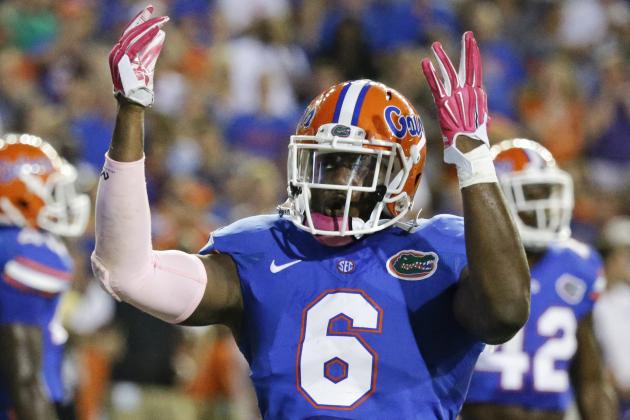
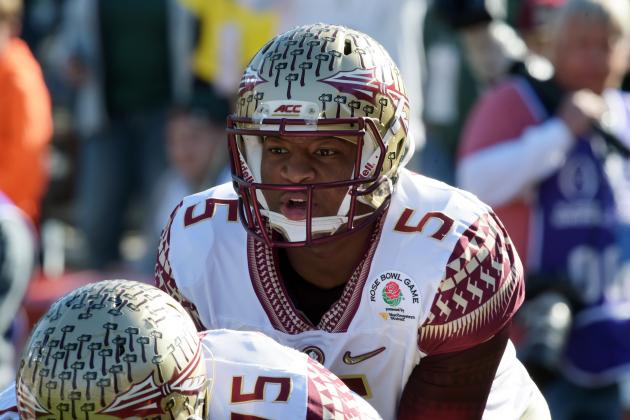
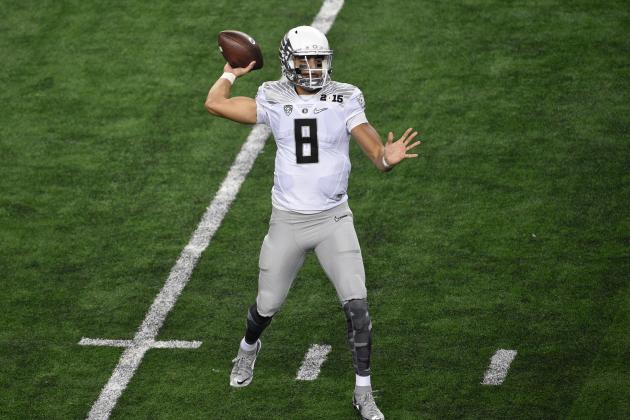


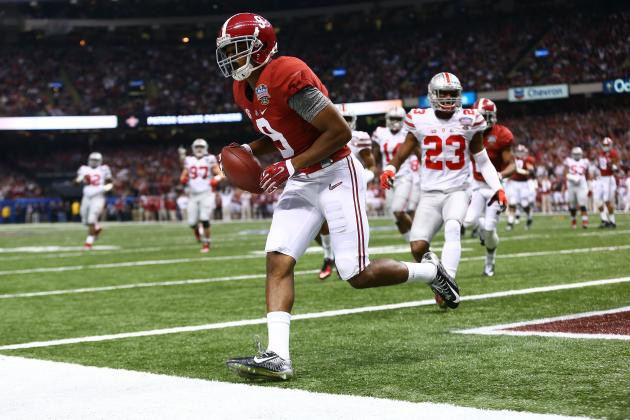
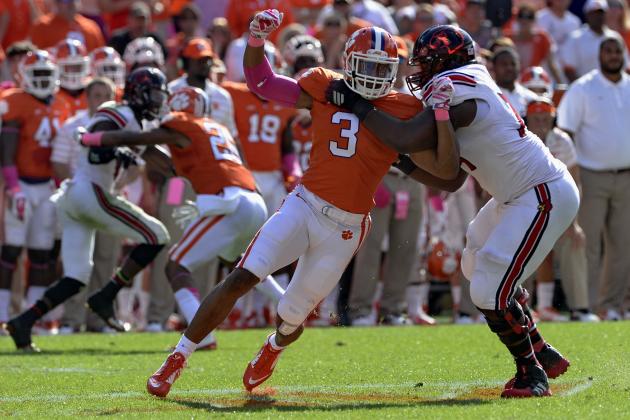
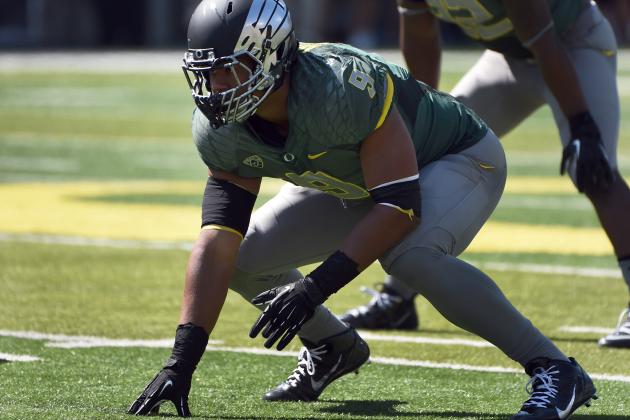
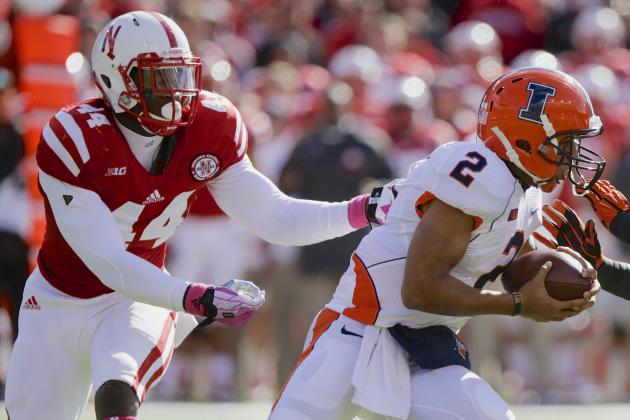
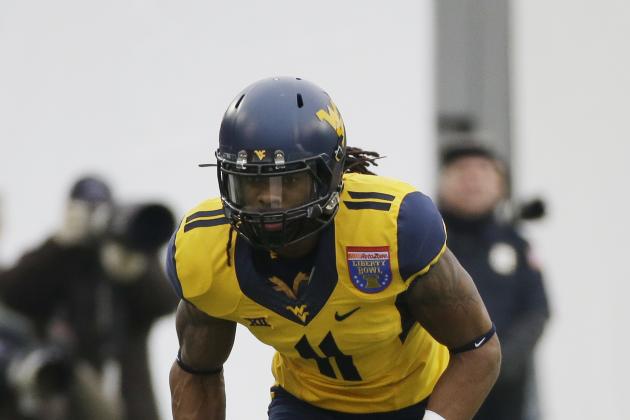
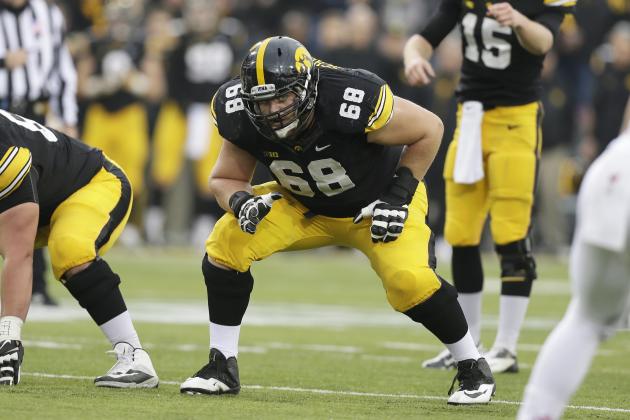
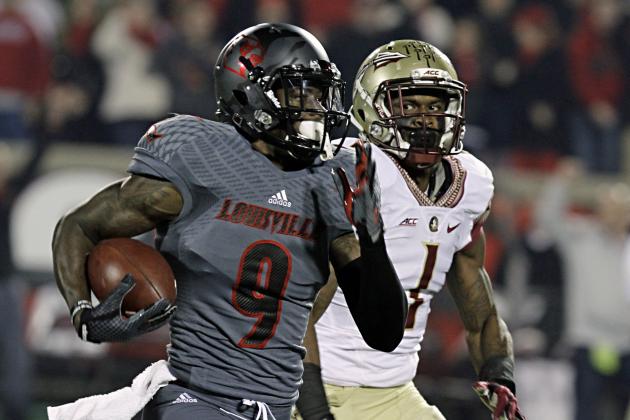
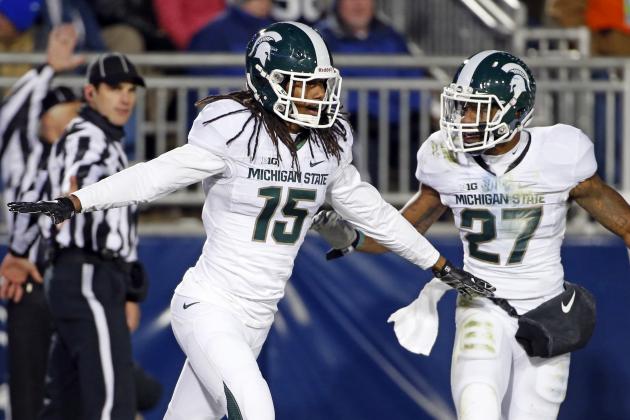
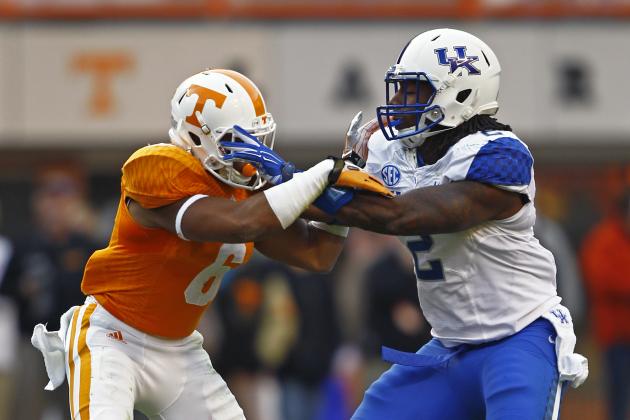
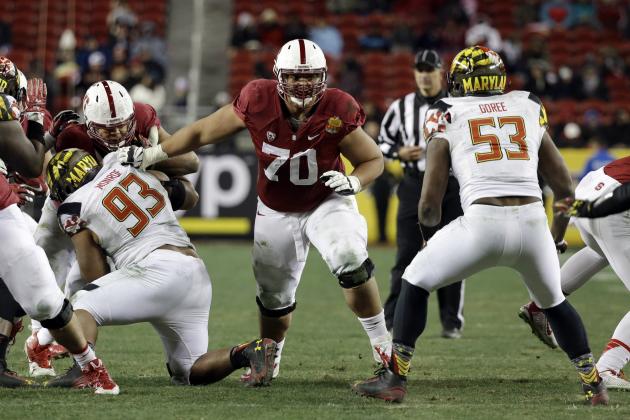
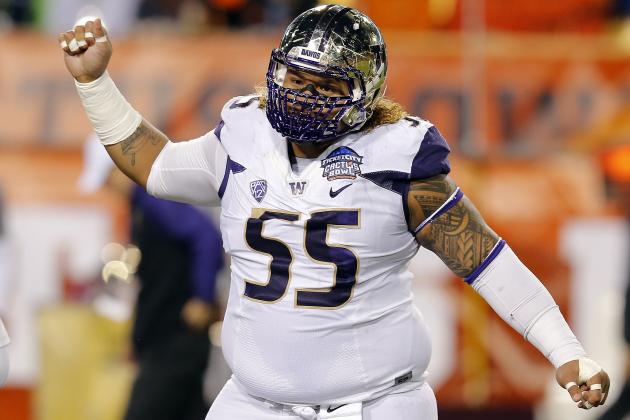
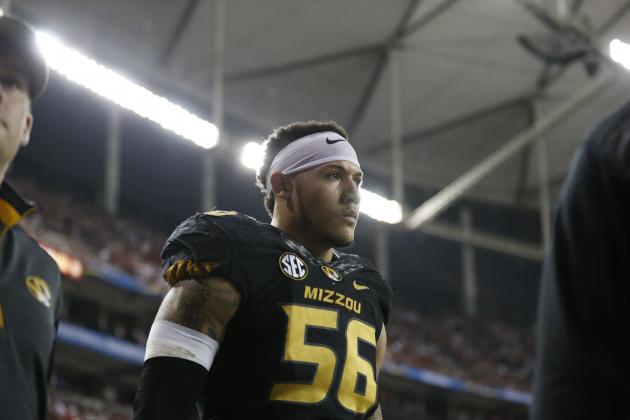
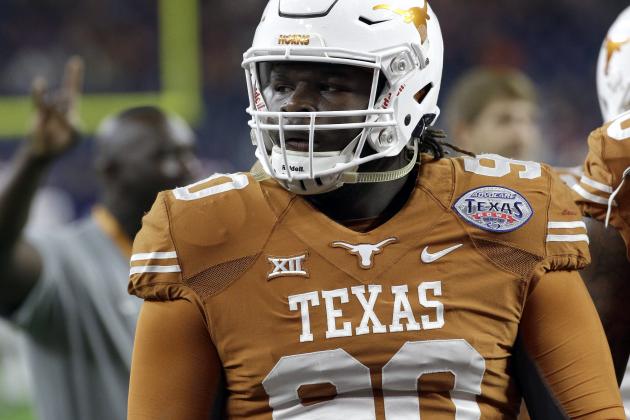
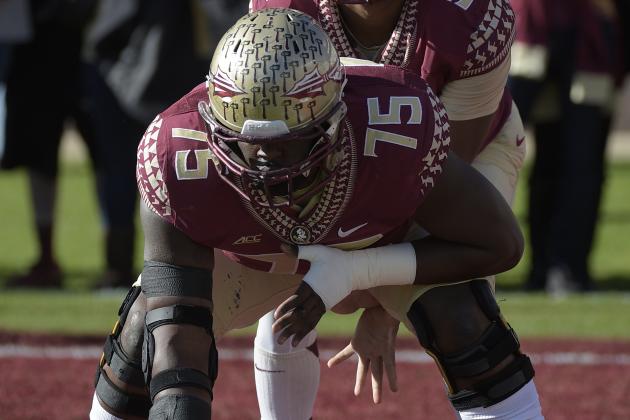
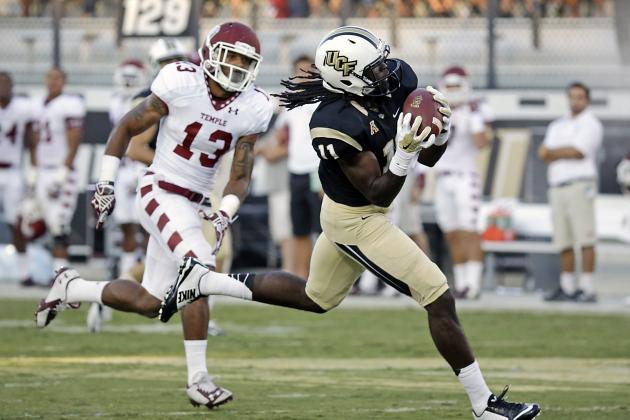
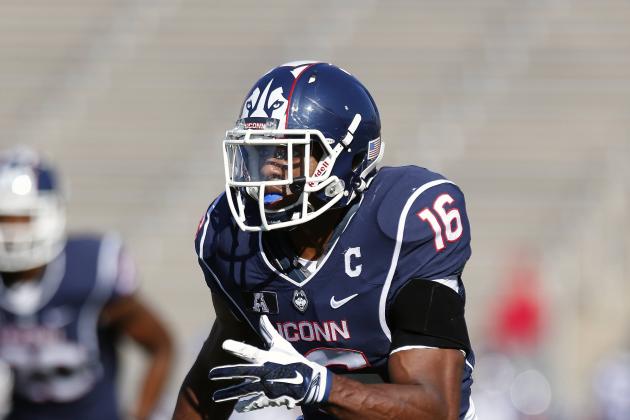
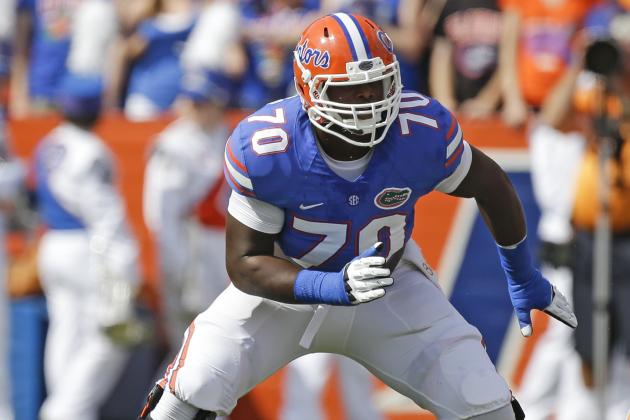
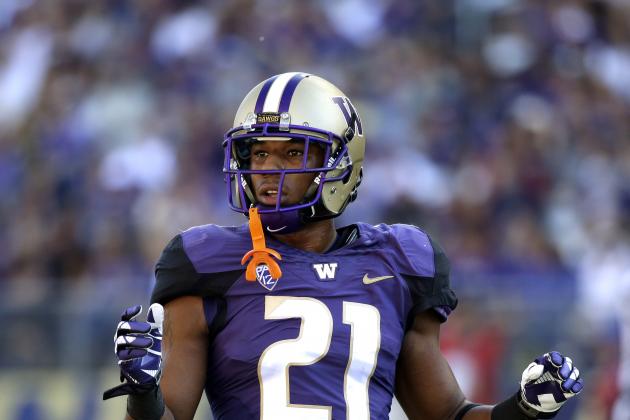
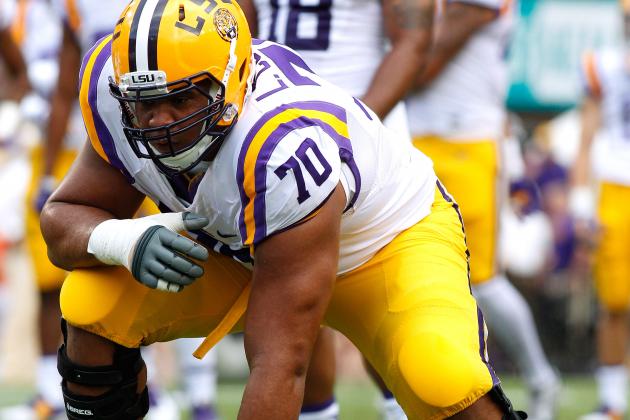

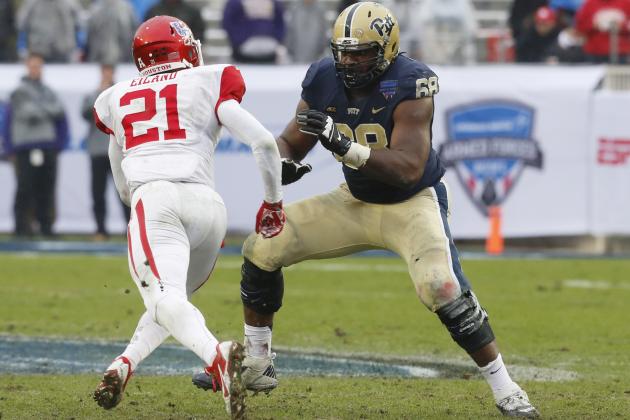
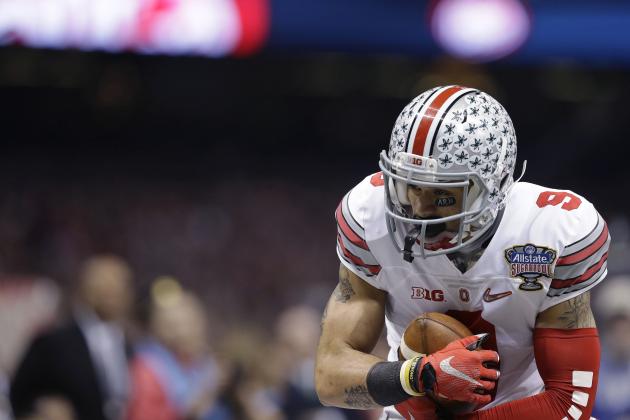
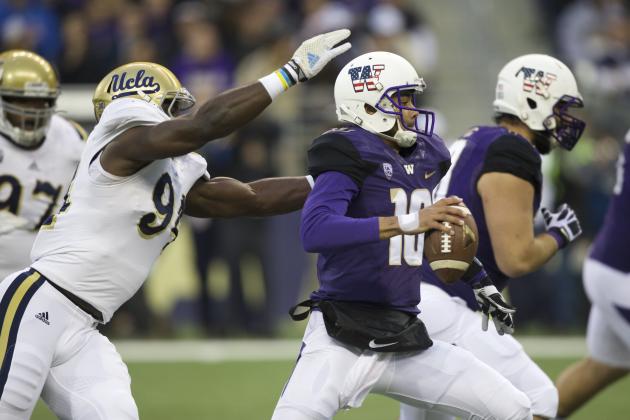
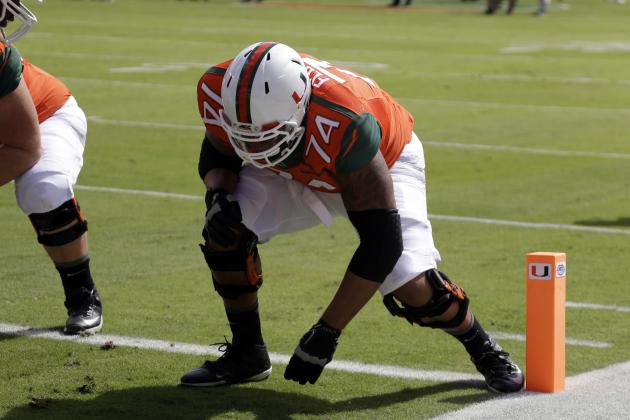
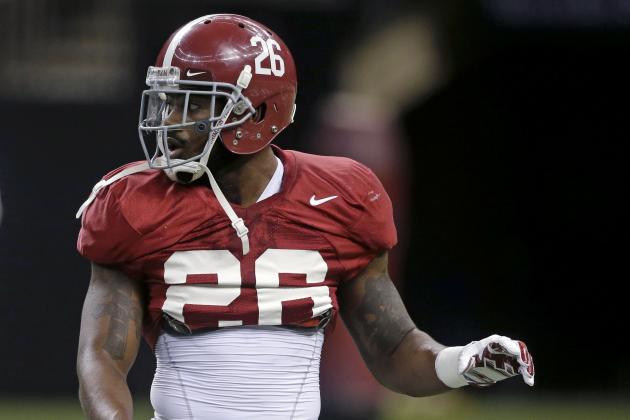
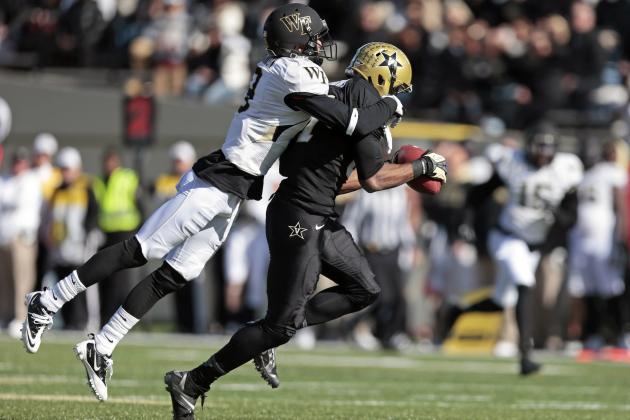
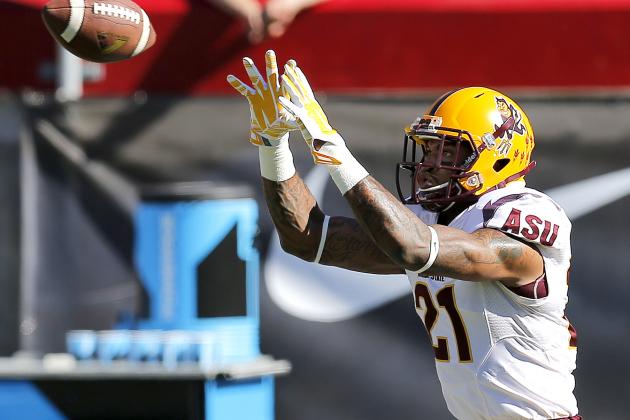
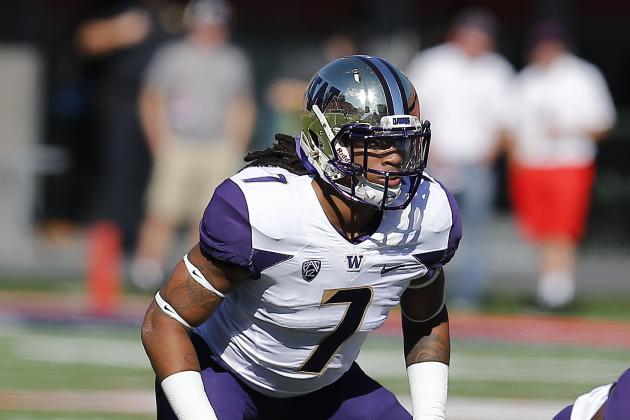
This entry passed through the Full-Text RSS service – if this is your content and you’re reading it on someone else’s site, please read the FAQ at fivefilters.org/content-only/faq.php#publishers.